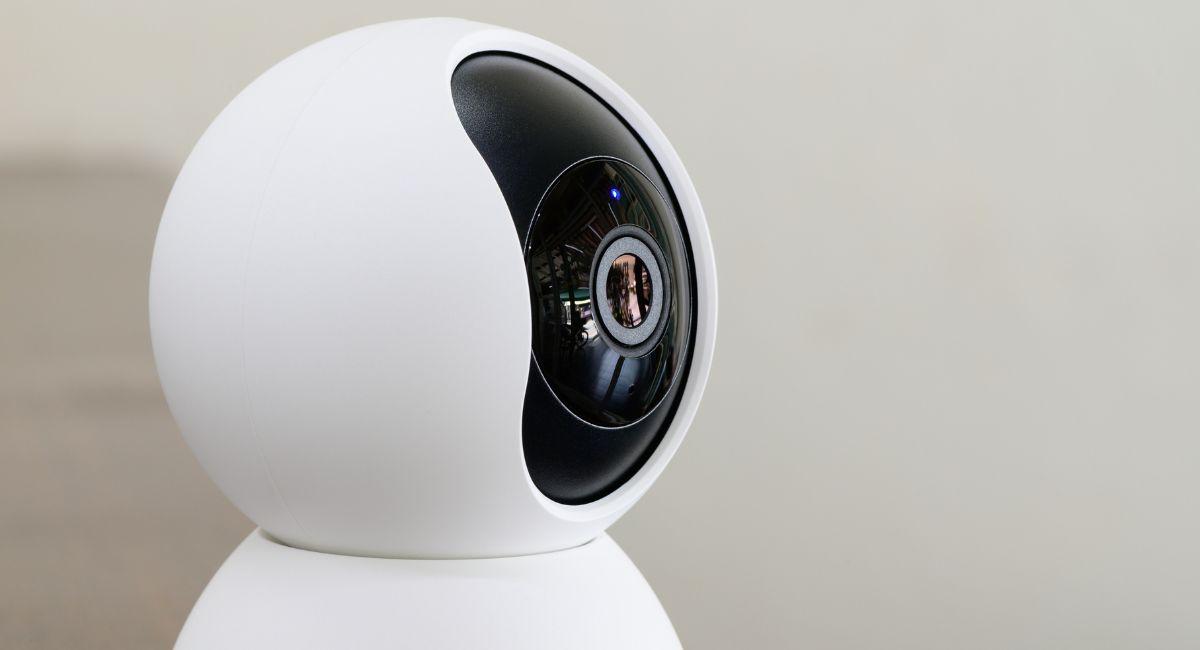Top 10 Intriguing Reasons Gadgets Have Redefined How Investors See A Metaverse Company

The metaverse refers to a network of interconnected virtual worlds that users can access through avatars. These virtual spaces offer a persistent and immersive experience, allowing users to interact with each other, participate in activities, and even own digital assets. It is a virtual reality (VR)-)-enabled, interconnected digital universe where users can interact with each other and digital environments in real time through various gadgets. Conceptualized as a collective virtual space that transcends physical boundaries, the metaverse encompasses a wide range of immersive experiences, including social interactions, gaming, entertainment, education, commerce, and more. It is characterized by its persistent nature, allowing users to create, own, and monetize digital assets and experiences within the virtual environment.
At its core, it is built upon advanced technologies such as virtual reality, augmented reality, blockchain, artificial intelligence, and cloud computing. These technologies enable seamless integration of digital content, user avatars, and interactive environments, providing a rich and immersive user experience.
One of the key aspects is its decentralized and open nature, allowing for user-generated content, social interactions, and economic activities to thrive. Users can explore virtual worlds, participate in virtual events and activities, socialize with others, create and customize their digital identities, and even conduct business transactions.
The metaverse holds significant potential across various industries, including gaming, entertainment, education, retail, healthcare, and beyond. In gaming, for example, it enables players to immerse themselves in vast virtual worlds, collaborate with others, and create and trade virtual assets. In education, it offers immersive learning experiences and virtual classrooms, facilitating interactive and engaging educational content.
It represents a paradigm shift in how we interact with digital content and each other, blurring the lines between the physical and digital worlds. As technology continues to evolve and connectivity becomes more ubiquitous, it is poised to become an integral part of our daily lives, shaping the future of human interaction, entertainment, and commerce.
Also, read- Will AI Win The Race With Metaverse Or A Collaboration Is The Future?
Investors in Metaverse company

Investors in companies are drawn to the transformative potential of virtual reality (VR) and augmented reality (AR) technologies, recognizing the vast opportunities presented by the emerging metaverse ecosystem. These investors span a diverse range of entities, including venture capital firms, private equity funds, technology giants, gaming companies, and individual angel investors.
Venture capital firms play a significant role in financing early-stage startups, providing funding, mentorship, and strategic guidance to help them develop innovative technologies and scale their operations. These firms are attracted to metaverse companies that demonstrate strong technological capabilities, visionary leadership, and the potential to disrupt traditional industries.
Private equity funds also invest in established companies seeking growth capital or expansion opportunities. These funds typically target companies with proven business models, solid revenue streams, and a track record of success in the metaverse space.
Technology giants such as Facebook (now Meta), Google, Microsoft, and Tencent are actively investing in metaverse initiatives to strengthen their positions in the emerging digital landscape. These companies are leveraging their vast resources, technical expertise, and extensive user bases to develop immersive experiences, virtual worlds, and social platforms within the metaverse.
Gaming companies have long been pioneers in the virtual reality space and are increasingly investing in metaverse technologies to create immersive gaming experiences and virtual worlds. Companies like Epic Games, the creator of Fortnite, and Roblox Corporation, the developer of the Roblox platform, have attracted significant investment to fuel their metaverse ambitions.
Individual angel investors, including high-net-worth individuals, tech entrepreneurs, and celebrities, are also participating in the metaverse investment landscape. These investors are drawn to the potential for outsized returns and the opportunity to support groundbreaking innovation in the digital realm.
Overall, investors in companies are motivated by the promise of revolutionizing human interaction, entertainment, commerce, and beyond in a virtual environment. They recognize the transformative power of the metaverse and are eager to capitalize on its growth potential in the years to come.
🔥 @GodeChain collaboration with @Eos420!
— 🔮Metaverse Worlds (@Metavers_Worlds) February 28, 2024
🔥 #EOS-420 is the first metaverse inscription protocol built on the EOS blockchain. It represents an exciting experiment that pushes the boundaries of asset formats by harnessing the power of recursion
🔽VISIThttps://t.co/NG5no9ifCI pic.twitter.com/O0iOqBo4tw
10 reasons Gadgets have redefined how investors see a Metaverse company

- Accessibility and User Experience: Gadgets like VR headsets, AR glasses, and haptic gloves are crucial for interacting with the Metaverse. Their advancements directly impact the accessibility and user experience, which are key factors influencing the potential success of a Metaverse company. Investors now consider the compatibility and integration of these gadgets with the company’s Metaverse vision.
- Enhanced User Engagement: Gadgets can significantly enhance user engagement within the it. Features like realistic avatars, immersive environments, and interactive objects, facilitated by advanced gadgets, can significantly influence user immersion and engagement metrics, which are crucial for attracting and retaining users in the Metaverse.
- Monetization Potential: Gadgets act as gateways, and their adoption directly impacts the monetization potential of Metaverse companies. Investors now consider the company’s strategy for leveraging gadgets, such as through sales, subscriptions, or in-app purchases within the Metaverse, to generate revenue.
- Demonstrates Technical Capability: Developing and integrating functionalities for advanced gadgets within the Metaverse showcases a company’s technical capabilities and its commitment to building a robust and immersive virtual world. This technical prowess is a significant factor influencing investor confidence in a company’s long-term potential.
- Future-Proofing the Metaverse Experience: Continuous innovation and adaptation in the gadget landscape are crucial for sustaining a thriving. Investors now value companies that demonstrate an understanding of these advancements and have a plan to integrate future gadgets and technologies seamlessly into their experience.
- Partnerships and Collaborations: Collaborations with gadget manufacturers and developers can significantly benefit Metaverse companies. Investors now consider a company’s ability to forge strategic partnerships to leverage expertise, resources, and ensure compatibility with various gadgets, which can strengthen the overall ecosystem.
- Data Gathering and User Insights: Gadgets can provide valuable data on user behavior, preferences, and interactions within the Metaverse. Investors value companies that can effectively utilize this data to personalize user experiences, improve their offerings, and make data-driven decisions for future development.
- Marketing and User Acquisition: Gadgets can be powerful marketing tools for companies. Investors are now looking at how companies leverage these gadgets to showcase their experiences and attract new users, as successful user acquisition is essential for the growth and sustainability of a platform.
- Security and Privacy Considerations: As gadgets become more sophisticated, so do the potential security and privacy concerns associated with user data and interactions within them. Investors now scrutinize a company’s approach to securing user data, ensuring responsible data collection practices, and building trust with users in the environment.
- Evolving Regulatory Landscape: As gadget use evolve, regulatory landscapes are likely to adapt. Investors now consider a company’s understanding of these potential regulations and its ability to comply with them, as navigating the evolving legal landscape is crucial for operating successfully in the Metaverse.
By understanding how gadgets are shaping the landscape, investors can make informed decisions when evaluating companies and their potential for future success.
Exploring Top Metaverse Gadgets and Their Functionality

The metaverse, an immersive virtual world, is rapidly evolving, and with it comes a wave of innovative gadgets designed to enhance your experience. Here, we delve into some of the top metaverse gadgets currently available, exploring their core functionalities:
1. Virtual Reality (VR) Headsets:
- Functionality: VR headsets transport users into completely immersive virtual environments, allowing them to interact with the metaverse in a highly realistic way. Popular options include Meta Quest 2, PlayStation VR, and HTC Vive.
- Core features: High-resolution displays, head tracking, motion tracking, hand tracking (in some models), and controllers for navigating the virtual world.
2. Augmented Reality (AR) Glasses:
- Functionality: AR glasses overlay digital elements onto the real world, allowing users to interact with the metaverse while remaining partially grounded in their physical environment. Leading examples include Microsoft HoloLens 2 and Magic Leap 2.
- Core features: Transparent displays, spatial mapping, object recognition, and voice or gesture controls for interacting with the digital overlays.
3. Haptic Gloves:
- Functionality: Haptic gloves add a layer of touch sensation to the virtual experience, allowing users to feel objects and interact with the metaverse in a more realistic way. Examples include Senseglove Nova and bHaptics Tact Glove.
- Core features: Provide force feedback, vibration, and temperature changes to simulate touch sensations while interacting with virtual objects.
4. Omnidirectional Treadmills (OMDTs):
- Functionality: OMDTs allow users to walk, run, and even jump in place while remaining stationary in the real world, enabling natural movement within the metaverse. Popular options include Kat Walk C and Cyberith Virtualizer.
- Core features: Provide a moving platform that responds to the user’s movements, simulating walking, running, and other physical actions in the virtual environment.
5. Facial Tracking and Expression Capture Devices:
- Functionality: These devices track facial expressions and translate them into avatars within the metaverse, allowing for more realistic and expressive communication and interactions. Examples include Apple’s TrueDepth camera and Rokoko Smartsuit Pro.
- Core features: Capture facial movements, emotions, and expressions, translating them into real-time animations of your avatar’s face in the metaverse.
Additional Considerations:
- Compatibility: Ensure your chosen gadgets are compatible with the specific metaverse platform you intend to use.
- Accessibility: The cost of these gadgets can vary significantly, posing an accessibility challenge for some users.
- Safety and Health: While exciting, prolonged use of VR and AR headsets might raise concerns regarding eye strain and potential motion sickness. It’s crucial to practice responsible usage and prioritize comfort and well-being.
The Future of Metaverse Gadgets:
As the metaverse continues to evolve, we can expect even more innovative and sophisticated gadgets to emerge. Advancements in areas like sensory feedback, brain-computer interfaces, and biometric integration hold the potential to further blur the lines between the physical and virtual worlds, shaping the future of human interaction and experience within the metaverse.
Conclusion
Gadgets have undeniably redefined how investors perceive a metaverse company, playing a pivotal role in shaping the future of this emerging industry. The evolution and widespread adoption of gadgets, including virtual reality (VR) headsets, augmented reality (AR) glasses, wearable devices, and smartphones, have significantly enhanced the accessibility and immersive capabilities of the metaverse.
One of the key reasons gadgets have redefined investors’ perception of metaverse companies is the increased consumer adoption and demand for immersive experiences. As gadgets become more affordable, user-friendly, and technologically advanced, they enable a broader audience to access and engage with the metaverse. This growing user base presents lucrative opportunities for companies to monetize their virtual environments, digital assets, and experiences.
Moreover, gadgets have facilitated the convergence of the physical and digital worlds, blurring the lines between reality and virtual reality. AR glasses and wearable devices, for example, enable users to overlay digital information and experiences onto their physical surroundings, creating a seamless integration between the two realms. This convergence opens up new avenues for metaverse companies to explore innovative use cases across various industries, from gaming and entertainment to retail, education, and healthcare.
Furthermore, gadgets have catalyzed technological advancements within the ecosystem, driving innovation in hardware, software, and content development. Companies investing in metaverse technologies and infrastructure, such as VR hardware manufacturers, AR software developers, and content creation platforms, stand to benefit from the growing demand for immersive experiences fueled by gadgets.
In conclusion, gadgets have revolutionized how investors perceive metaverse companies by expanding the accessibility, immersive capabilities, and market potential of virtual environments. As gadgets continue to evolve and proliferate, they will play an increasingly integral role in shaping the future of the metaverse industry, driving growth, innovation, and investment opportunities for companies operating within this space.


























































